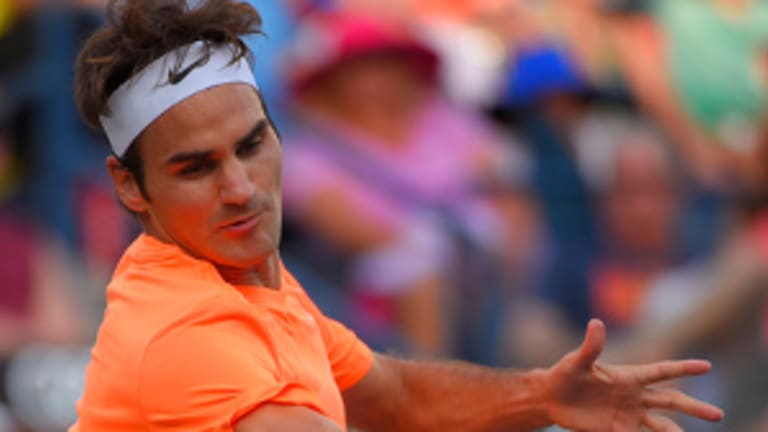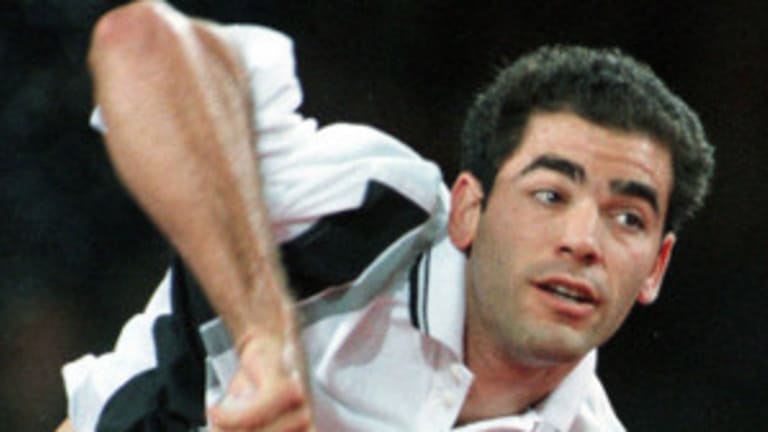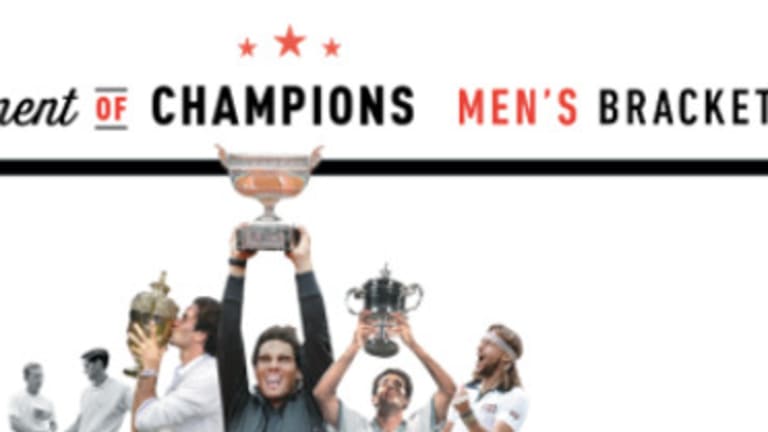Wondering what the Tournament of Champions is, and how we got here? Read more about our 50th Anniversary Celebration and get caught up on all the matches so far.
The Maestro vs. Pistol Pete. Elegance vs. effectiveness. The first great player of the 21st century vs. the last great player of the 20th. The start of the power-baseline era vs. the swan song of the serve and volley. Federer vs. Sampras isn’t the only way our Tournament of Champions could have ended, but it makes for a fitting finale.
As a young player, Federer idolized the champions of the 1980s and 1990s, attackers like Boris Becker, Stefan Edberg, and Sampras, who used their one-handed backhands to move forward whenever they could. Federer went so far as to swing the same Wilson Pro Staff that Sampras did, and why not? Sampras’ weapon of choice helped him win 14 Grand Slam titles and top the ATP rankings for 286 weeks. Both of those marks were men’s records at the time, and they seemed destined to stand for years—until Sampras’ No. 1 Swiss fan, Federer, broke them both less than a decade later.
Sampras and Federer played just once, at Wimbledon in 2001, when Sampras was nearly 30 and declining, and Federer was nearly 20 and ascending. That year Wimbledon changed to a hardier all-rye grass, one that produced a higher bounce and ushered in an era of baseline dominance on Centre Court. Federer himself would join the retreating wave and win most of his titles there from the backcourt. But in 2001 he beat Sampras at his own net-rushing game, in a classic five-setter. Their handshake that day was a passing of the torch.


